ENGLISH


ENGLISH
August 21th, 2023
Large-scale deforestation and that caused by land invasions, rampant mining, the ghosts of dams threatening to be built, forest fires, and the advancement of an asphalt road are turning the Bolivian Amazon into a scene of destruction.
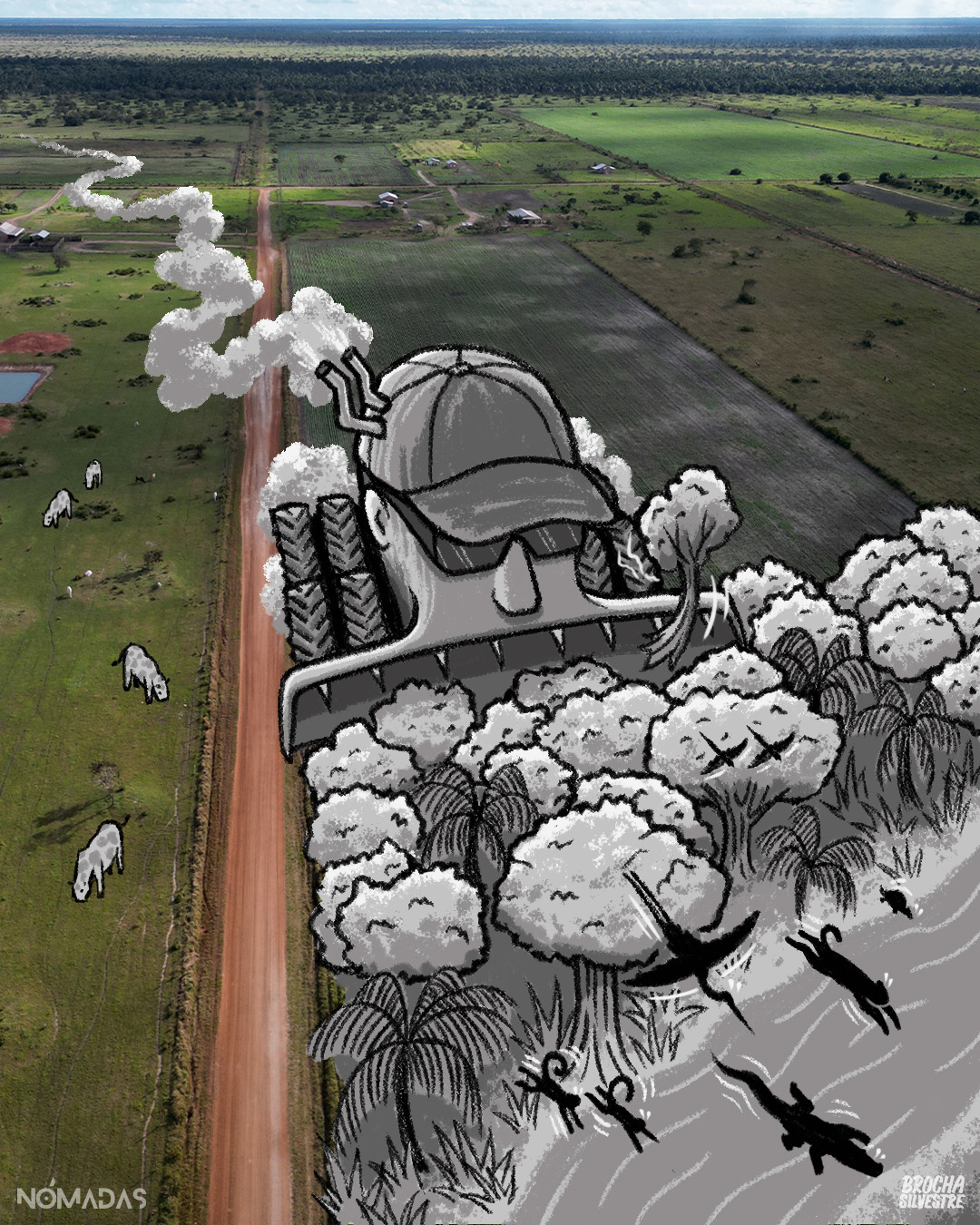
Bolivia devours its forest with a voracious appetite, and there is no human power or authority to stop this level of destruction. Every day, areas of the jungle comparable to 1,057 football fields are lost. In just 2022, the country got rid of 386,000 hectares (3,860 km2), a 32% increase compared to 2021, placing Bolivia among the top three countries in the world with the greatest loss of its tropical primary forest. The large-scale agricultural clearings, which disregard riverbeds and soil nature, even enter areas that are meant to be solely dedicated to forestry, knowing that in less than five years, the land will be turned into useless and desolate deserts.
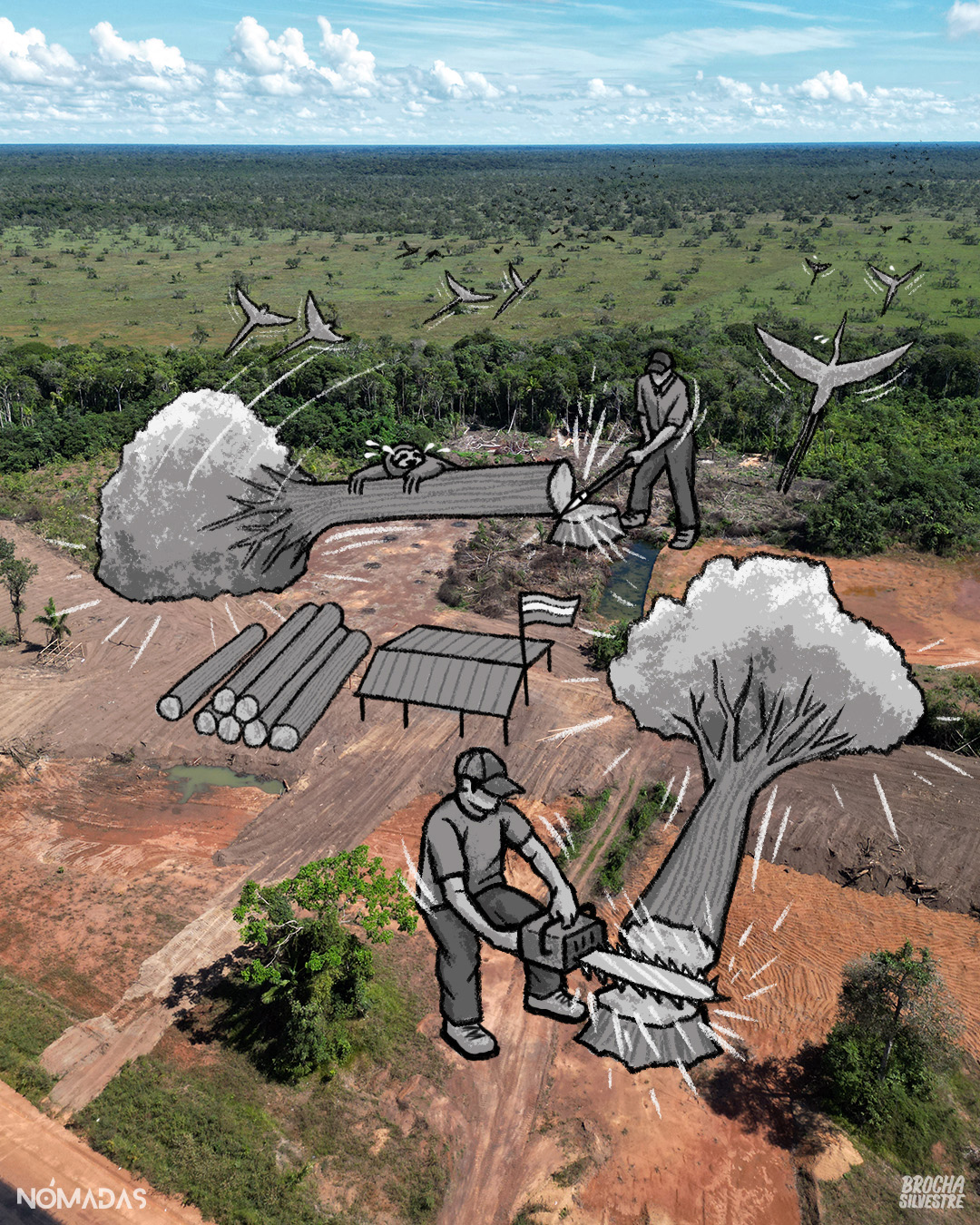
Deforestation in Bolivia is also the result of land invasions by colonists who call themselves «landless,» taking pieces of nature, even in protected areas, to claim them as their own above the laws and regulations that only exist on paper. They gather in large groups and enter silently or by force, often in areas that are not available for settlement. But removing the colonists is almost impossible. Authorities called upon by law often turn a blind eye and fail to use legal tools to protect Bolivia’s forests.
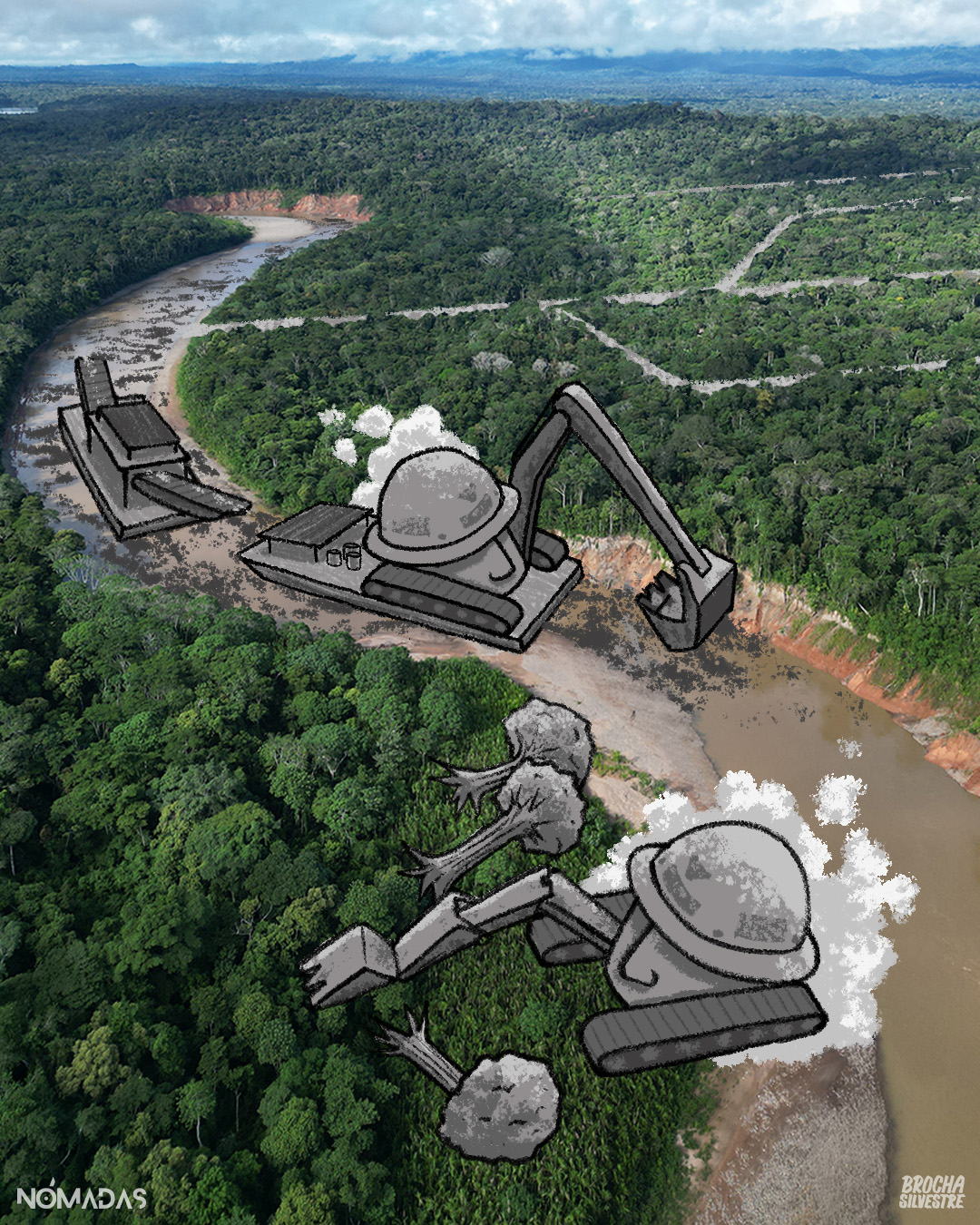
Illegal mining is making its way through Bolivia’s Amazon rivers. It advances with its reckless dredges and an army of men who show no respect for protected areas, indigenous communities, or wildlife habitats. They are forming states within the state, granting themselves licenses to set up their camps and unleash their extractive machinery on natural resources. The capital of these destructive businesses has already injected mercury into the waterways and the bodies of ancestral inhabitants who also consume the poisoned fish.
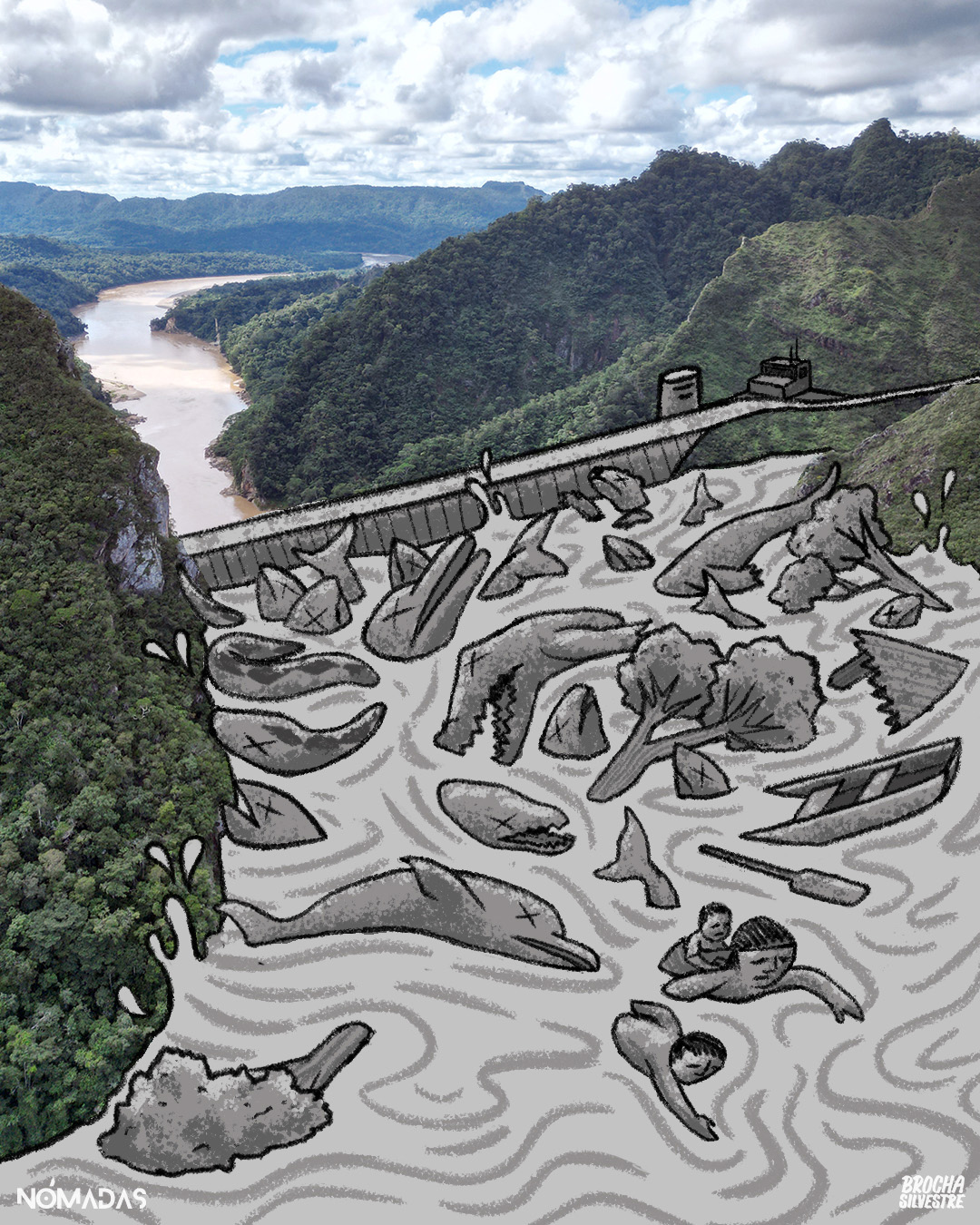
The threat of constructing two mega-dams on the Beni River looms like a sword over Bolivia’s northern Amazon region. If both projects are realized, environmental experts estimate that the dams will flood 773 km2 of vegetation, an area exceeding five times the urban area of the city of La Paz. But that won’t be all: they will also affect the Madidi National Park and the Pilón Lajas. Several indigenous communities will lose their territory, nesting beaches for many bird species will disappear, fish reproduction will be affected, and an unimaginable number of animals will die due to flooding and abrupt changes in the ecosystem.
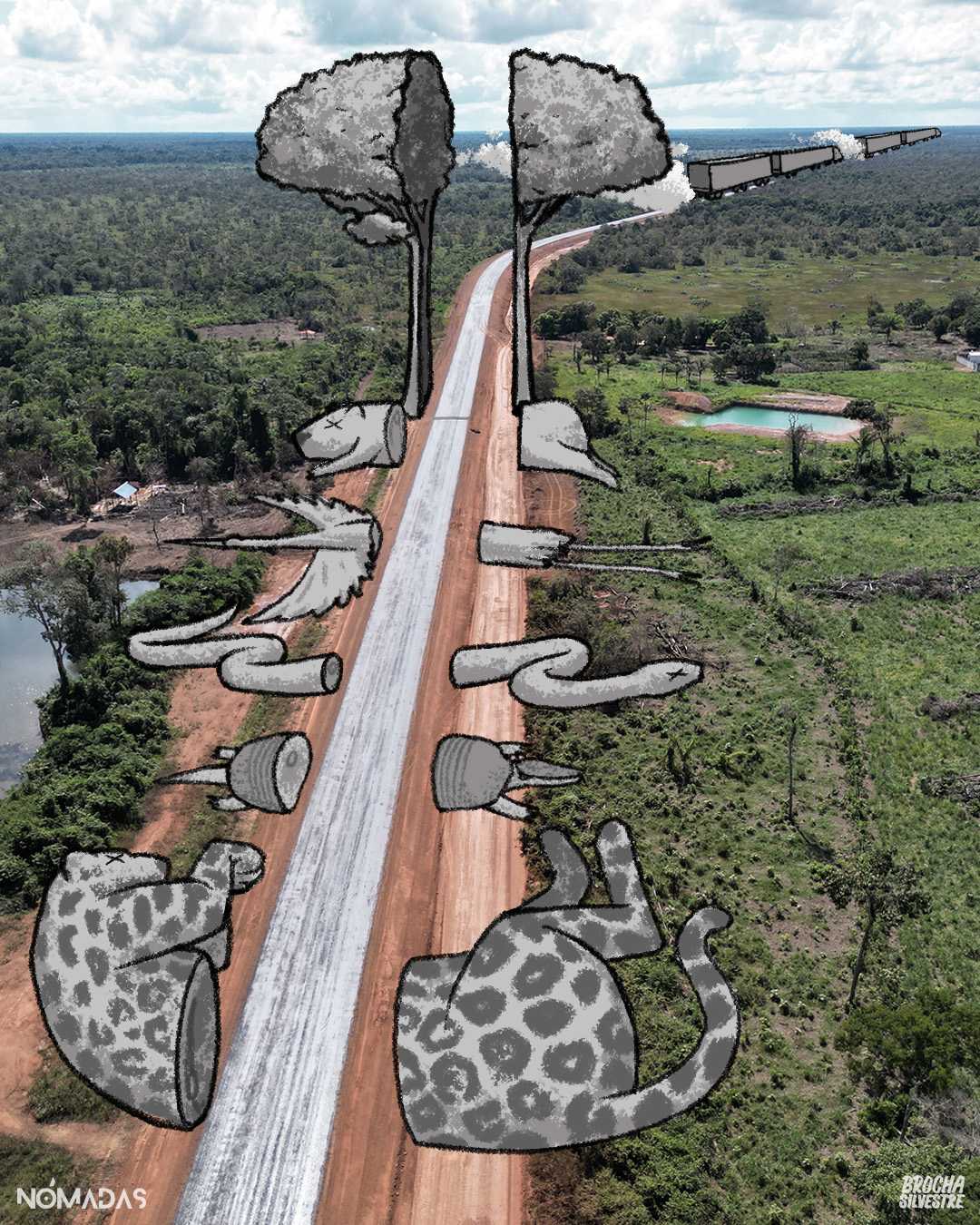
The body of a snake lies motionless on the road. It was probably trying to cross to the other side of the road under construction between Rurrenabaque and Riberalta (Beni—Bolivia). Or perhaps it was basking in the late afternoon sun, which becomes scarce within the forest at that hour. However, the passing vehicles, with inadequate signage, killed it, just like they did with capybaras, coatis, and even some slow-flying birds that descend to find water in the last wetlands that the asphalt has cut like a precise knife.
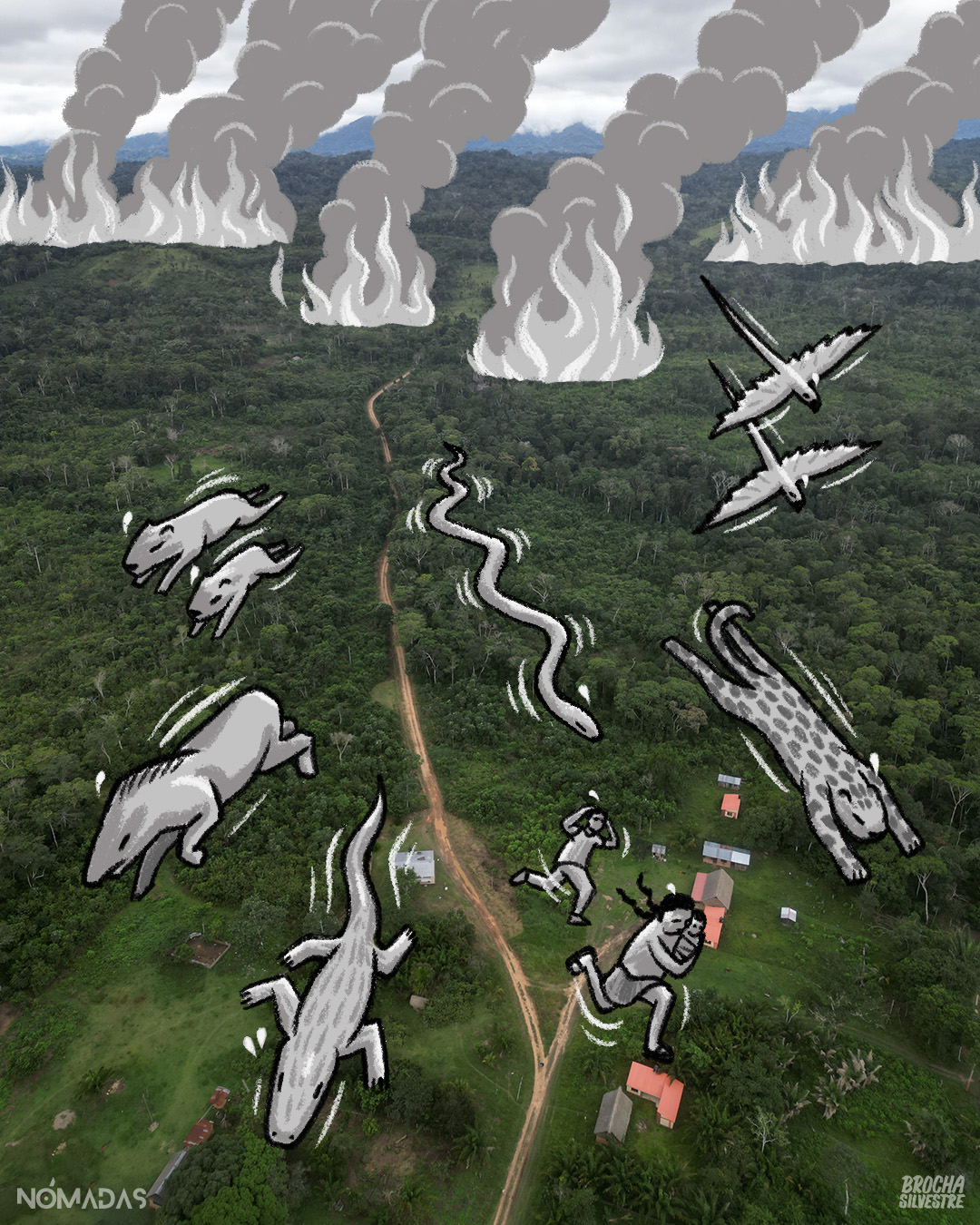
During the months of wildfires in the Bolivian Amazon, which extend for longer periods each year, it’s not only the trees that succumb, nor do only the human beings who have inhabited the jungle since time immemorial escape. While running for their lives, indigenous people encounter animals turned into specters, engulfed in flames, stumbling and fleeing. They see agoutis, peccaries, snakes, felines, and flocks of birds blindly flying amidst the mouths of fire that consume three to six million hectares of tropical forests, savannas, and wetlands each year, burning like medieval torches.
This microchronicles are part of the Special: Bolivia’s Invisible Amazon and its guardians who do not give up, carried out by Revista Nómadas, with the support of the Amazon Rainforest Journalism Fund in partnership with the Pulitzer Center.
STAFF:
DIRECTOR: Roberto Navia. PRODUCTION MANAGER: Karina Segovia. PHOTOGRAPHS: Karina Segovia, Lisa Mirella Corti. SOUND PRODUCTION AND POST-PRODUCTION: Andrés Navia. ILLUSTRATIONS AND INFOGRAPHICS: Brocha Silvestre. SOCIAL MEDIA EDITOR: Lisa Mirella Corti. WEB DESIGN AND DEVELOPMENT: Richard Osinaga. COLLABORATION: Manuel Seoane, Diego Adriázola y Daniel Coimbra.
COPYRIGHT 2023
Te contamos desde el interior de los escenarios de la realidad, iluminados por el faro de la agenda propia, el texto bien labrado y la riqueza poética del audiovisual y de la narrativa sonora, combinaciones perfectas para sentir el corazón del medioambiente y de los anónimos del Planeta.
